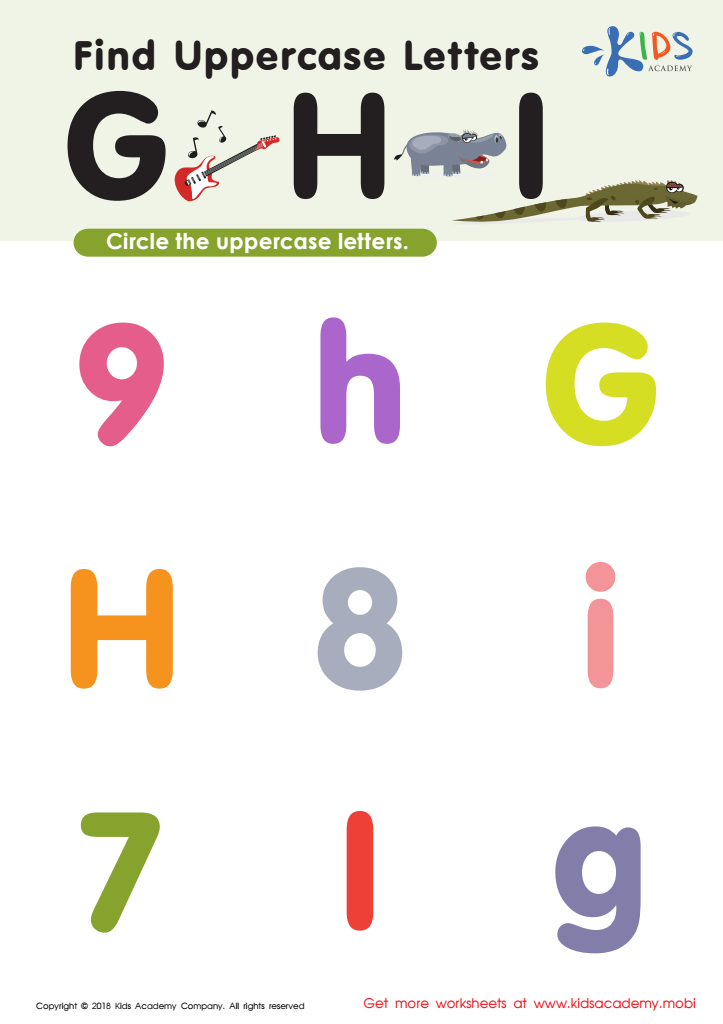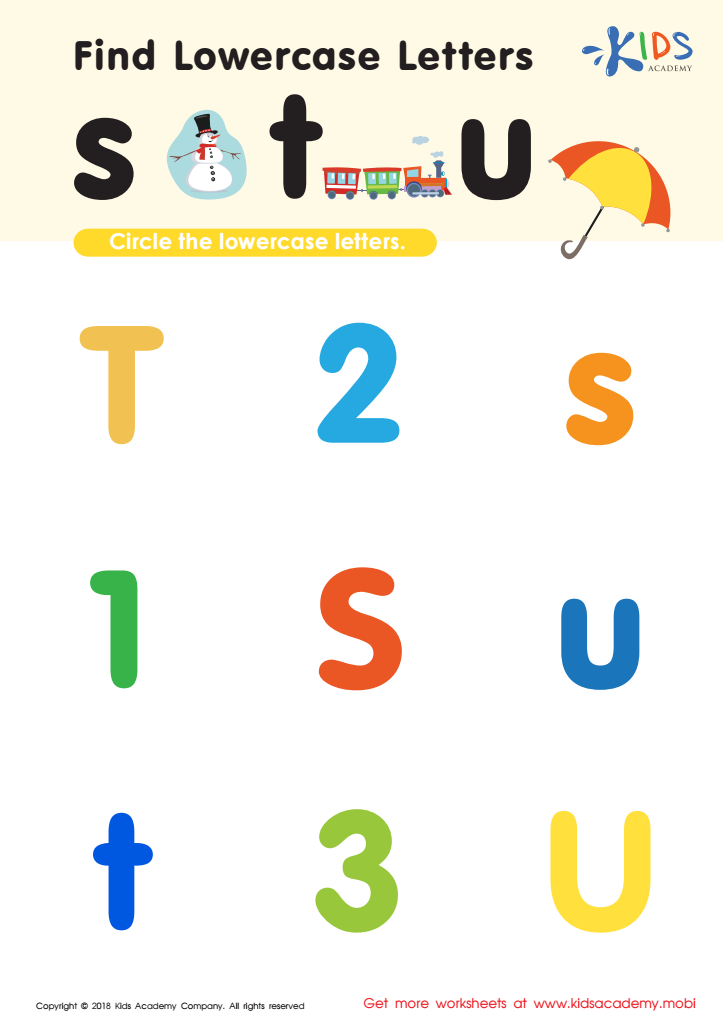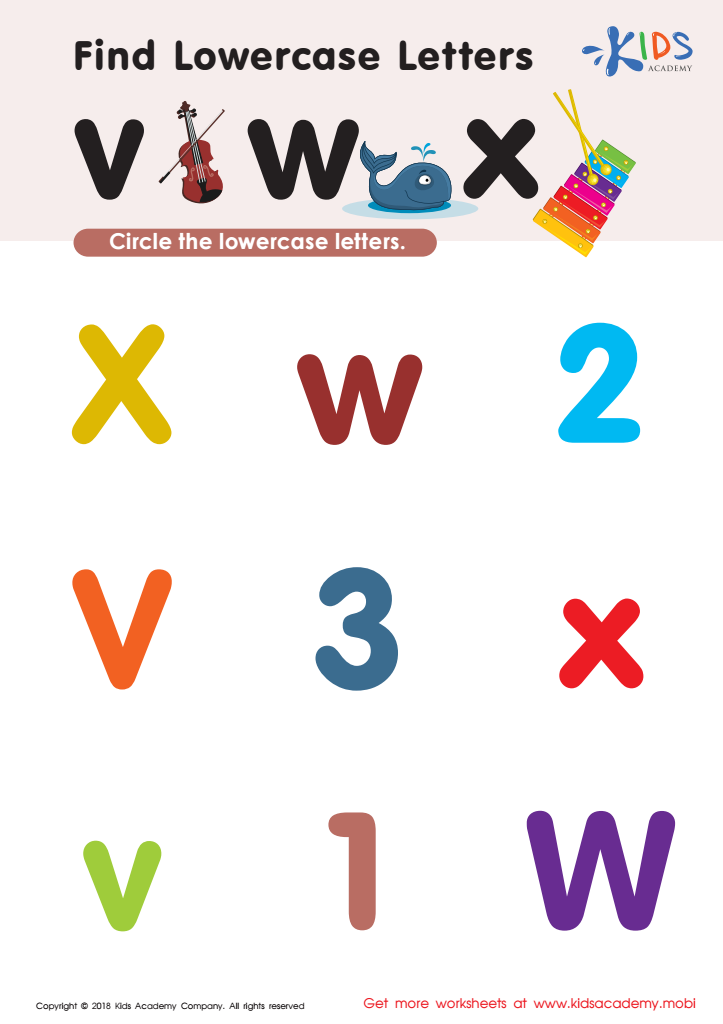Alphabet familiarity Normal Upper & Lowercase Letters Worksheets for Ages 6-8
6 filtered results
-
From - To
Discover our engaging "Alphabet Familiarity Worksheets" designed for children ages 6-8! These resources focus on enhancing recognition of both uppercase and lowercase letters through interactive activities. Each worksheet promotes letter identification, reinforces phonetic sounds, and encourages proper writing practice to build essential literacy skills. Ideal for young learners, our user-friendly worksheets incorporate fun visuals and games that captivate attention and make learning enjoyable. Perfect for use at home or in the classroom, these printable worksheets aim to boost your child's confidence and speed in letter recognition. Start your child's alphabet adventure today with these exciting and educational materials!


Find Uppercase Letters G, H, and I Worksheet


Find Uppercase Letters Worksheet


Find Uppercase Letters J, K, and L Worksheet


Find lowercase Letters s t u Worksheet


Find Uppercase Letters A, B, and C Worksheet


Find Lowercase Letters v w x Worksheet
Alphabet familiarity, particularly with normal uppercase and lowercase letters, is crucial for children aged 6-8, as it forms the foundation of their reading and writing skills. At this developmental stage, children transition from learning to read to reading to learn, emphasizing the need for fluency with letters. Mastery of both uppercase and lowercase letters aids in proper word formation and enhances their ability to identify and remember words. Understanding the difference between uppercase and lowercase letters is essential for reading comprehension, as they convey different meanings and functions in written language.
Furthermore, this familiarity supports the development of fine motor skills necessary for writing. Practicing both letter cases allows children to practice penmanship and improve their handwriting, which is vital for effective communication. Additionally, in a classroom setting, a strong grasp of the alphabet aids children in participating confidently in activities, such as phonics and vocabulary building, which are integral to literacy development.
By valuing alphabetical familiarity, parents and teachers empower children to develop critical language skills, foster a lifelong love for reading, and ensure they are well-equipped to navigate educational challenges ahead. Prioritizing this aspect of learning lays the groundwork for successful literacy experiences.
 Assign to My Students
Assign to My Students












